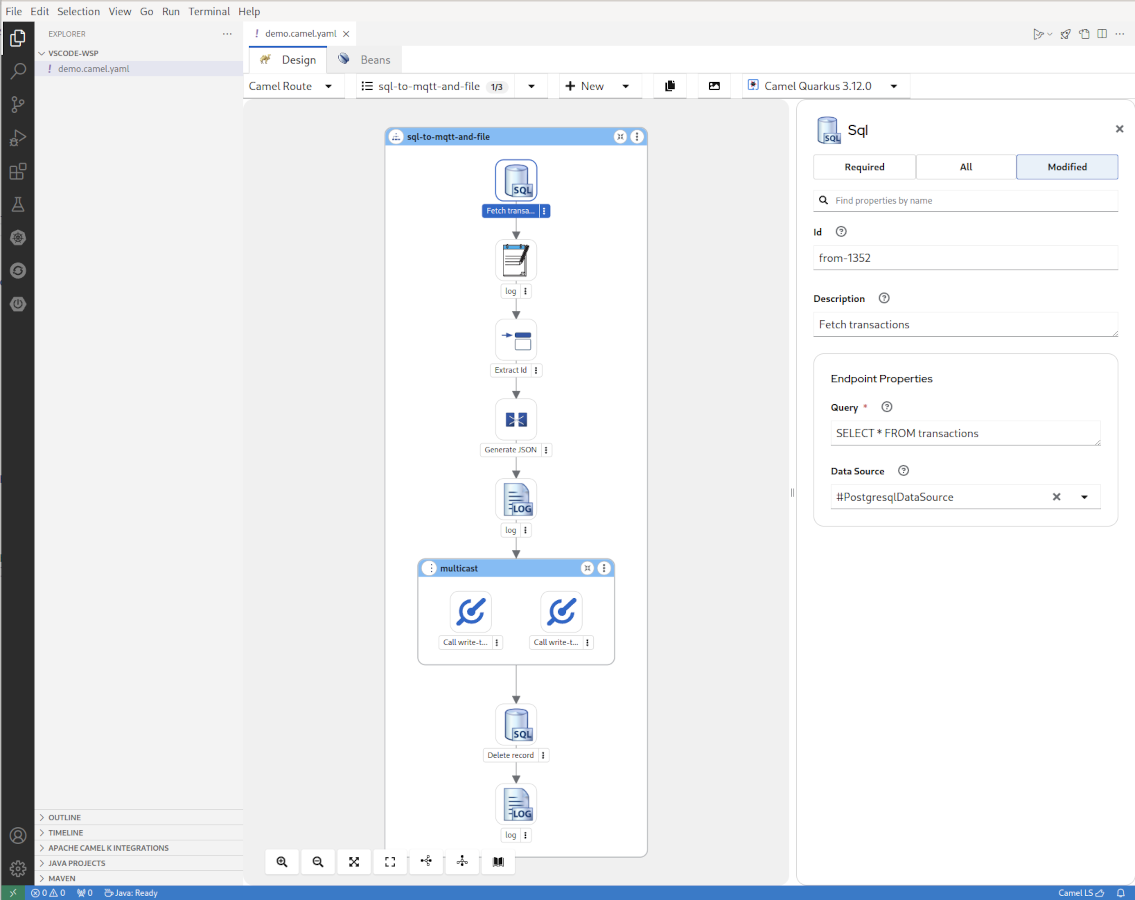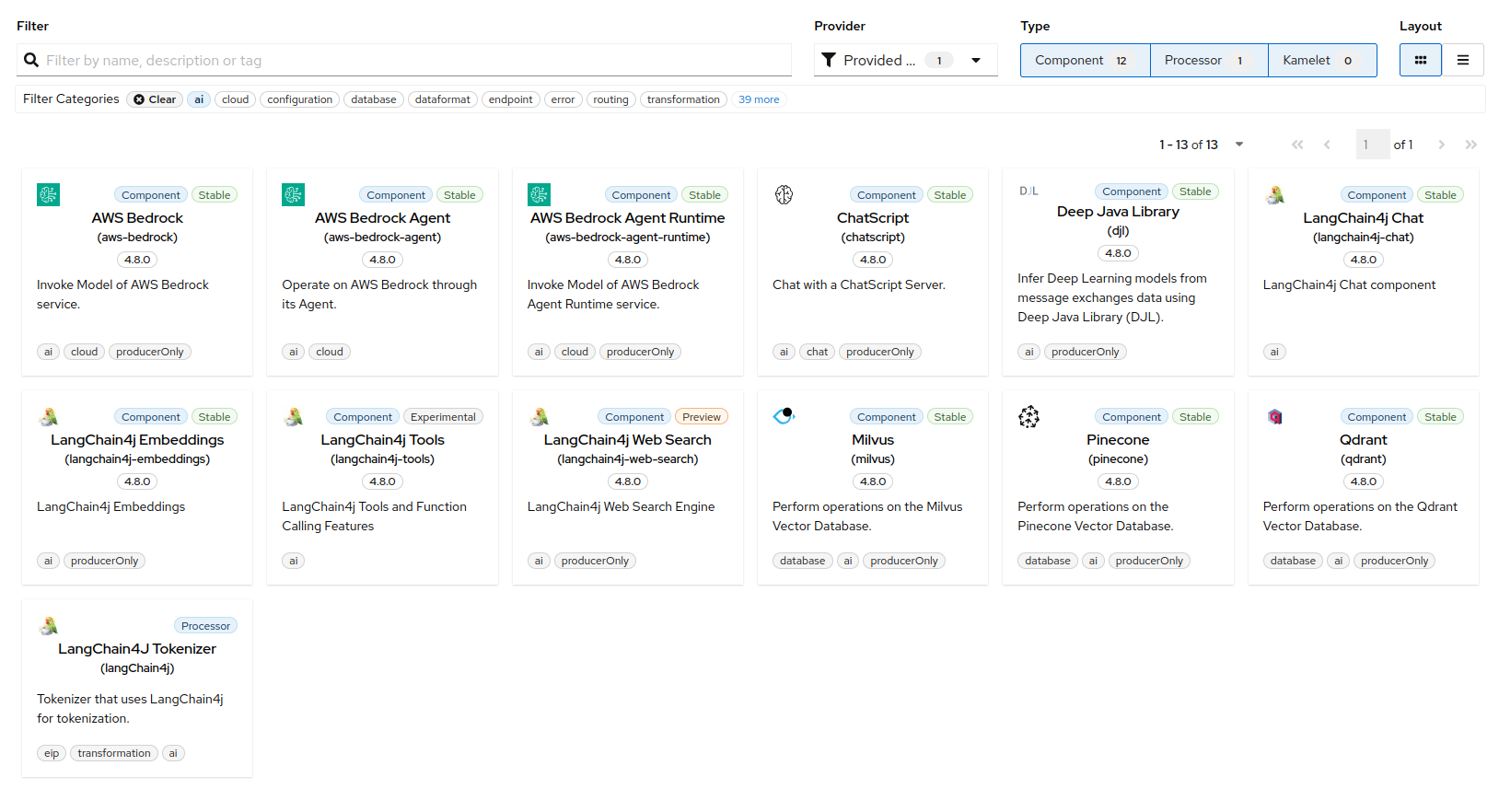Kaoto - The Integration Designer for Apache Camel
Features • Requirements • Documentation • Issues • Telemetry
Kaoto is an integration editor to create and deploy workflows in a visual, low-code way, with developer-friendly features like a code editor and deployments to the cloud. Kaoto augments user productivity via Apache Camel. It accelerates new users and helps experienced developers.
- Edit Camel files following pattern (
*.camel.yamland*.camel.yml). - Edit Kamelet files following pattern (
*.kamelet.yamland*.kamelet.yml). - Edit Pipe files following pattern (
*.pipe.yaml,*.pipe.yml,*-pipe.yamland*-pipe.yml) - Allow to edit
*.yamland*.ymlwhen opening through contextual menu. - Setting to provide custom set of catalog
- Edit Kaoto (
*.kaoto.yamland*.kaoto.yml) files. Note that these filename extensions are not supported by Camel JBang and are merely still here to stay backward-compatible with Kaoto v1.
- Kaoto files are always written and overwritten with
Linux-styleend of line (EOL).
- Kaoto 2 release in version 2.3.0-RC2.
Something is not working properly? In that case, feel free to open issues, add feature requests, report bugs, etc..
If you're eager to test latest snapshots, there are 2 kind of binary (*.vsix) available:
- Snapshot based on main branch of VS Code Kaoto using a released version of Kaoto. Pick latest on this site
- Snapshot based on main branch of VS Code Kaoto using the main branch of Kaoto (at time of last build of VS Code Kaoto main branch). Click on latest finished of this workflow, then download the artifact named
vsix-from-main-branch-of-kaoto, then extract the vsix binary fromvsix-from-main-branch-of-kaoto.zipdownloaded.
To install the vsix binary, see the official documentation.
If you'd like to help us get better, we appreciate it! Check out our Contribution Guide on how to do that.
The Kaoto for Visual Studio Code extension collects anonymous usage data and sends it to Red Hat servers to help improve our products and services. Read our privacy statement to learn more. This extension respects the redhat.telemetry.enabled setting which you can learn more about at How to disable Telemetry reporting.









